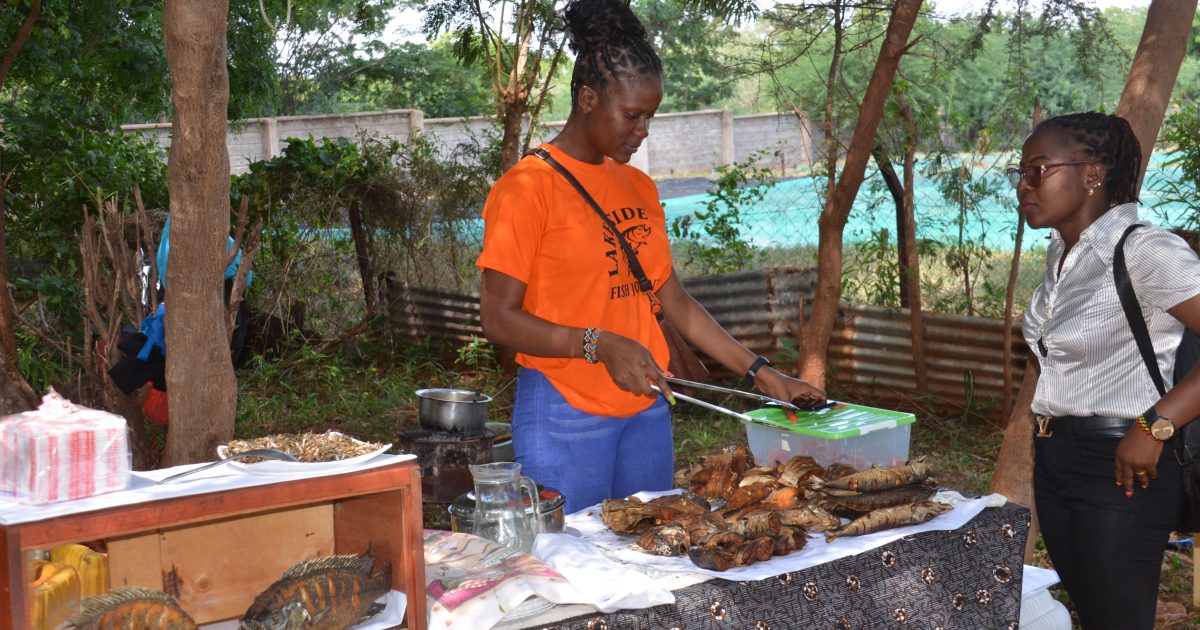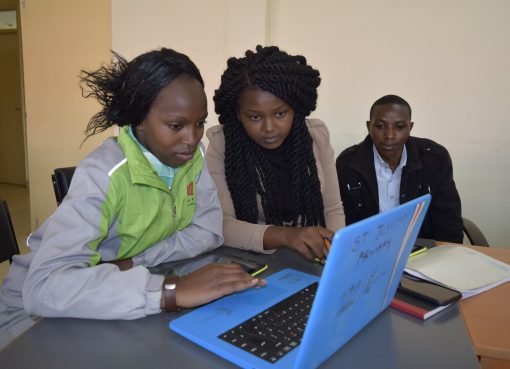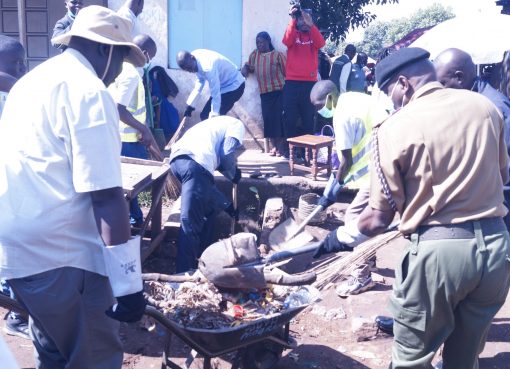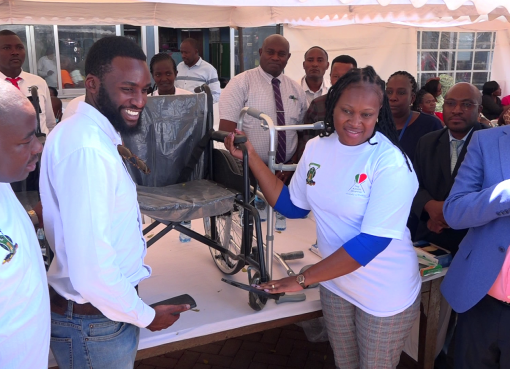Mr. Justin Kitolome’s fishpond at his farm in Mrughua in Mwatate Sub-county, has been a marine disappointment. It has everything a pond should have; water, feed and fish. But despite his vast efforts and investment, the fish yields have remained dismal for many years.
“The production remains low despite my efforts. This disappointment can easily overwhelm farmers who demand returns for their investment,” he says.

Mr. Kitolome is amongst hundreds of fish farmers in Taita-Taveta County, who have struggled to increase production with little success. The farmer admits that there was much he and others never knew about fish biology and farming.
“We believed fish farming was only about having ponds, water and fingerlings. We never considered factors like pond size, carrying capacity, hygiene, stress and quality of water mattered. That is what we are learning now,” he explains.
Under the ‘Go Blue’ Economy program, Taita-Taveta County has embarked on training the first batch of 227 fish farmers on the best practices in modern fish farming. Another batch of 69 farmers are undergoing Agribusiness training that is focusing on marketing. The program, supported by GIZ and Farm Africa, is part of a long-term strategy to bolster fish farming in the region and support food security under the government’s ‘Big 4’ Agenda.
County Executive Committee (CECM) Member for Agriculture and Fisheries, Davis Mwangoma, says the agenda to revive fish farming in the region was in progress and would bring on board partners and stakeholders in the fish value chain. Mr. Mwangoma notes that the potential for fish farming remains barely exploited.
“The region has a vast potential for fish production that is unexploited. All our efforts in the fisheries sector are geared towards having optimum fish production,” he said.
During the Economic Stimulus Program (ESP) initiated by the late President, Mwai Kibaki, in the early years of NARC government, farmers in Taita-Taveta County, then Taita district, benefited from 780 fishponds. The ponds were expected to produce an annual fish yield of over 100 tons of fish.
Decades later, only 380 fishponds are still in use. The rest, over 400, remain abandoned and choking under forests of weed. Lack of skills in fish rearing, high levels of poverty amongst farmers, climate change and absence of stable source of water to replenish the ponds have been cited as the major contributors to the collapse of the fish pond project.
Mr. Mwangoma says the abandoned ponds will also be revived to turn fish farming into a major income earner for thousands in the region.
“We have started with the farmers who still practice fish farming but we will soon loop in the others and restore this sector to be a leading source of income for farmers. With our partners, we are confident we will do it,” says the CECM.
Research on fish production in the region backs such claims. In 2020, Kenya Marine Fisheries Research Institute (KeMFRI), and Department of Fisheries conducted a joint survey on potential of fish production in the two transboundary lakes of Challa and Jipe.
The findings established that Lake Challa could produce 600 tons annually. Lake Jipe could produce over 100 tons. The active fishponds in the county with an average of 1,000 fingerlings each could yield 200 tons of fish annually.
The current fish production in the County is between 19 and 20 tons annually. This production cannot meet the demand in the market, forcing buyers and fishmongers to order fish from Kisumu and Mombasa.
“Every fish we produce in the County is consumed locally. The high demand forces traders and sellers to order fish from other regions. This project is intended to ensure we produce enough for the local market and to sell elsewhere,” he said.
A week ago, the Department of Fisheries and partners in the fish value-chain organized the first fish-exhibition in Voi.
The event brought together fish farmers, traders, fisheries experts, feed-sellers and marketers, in what was deemed as a complete value-chain in fish-farming enterprises.
Mr. Charles Ngala, Farm Africa County Boss, says it was crucial to bring all stakeholders together to strengthen the operations of the fish sector from production to consumption. The organization is engaged in capacity building for fish farmers in both production and marketing.
“This event was to introduce farmers and other players who complete the fish value chain. We need to know each other to boost this sector,” he said.
Ms. Emily Wafula, a scientist with KeMFRI’s Kegati Aquaculture Research Center, said the region’s warm climate was conducive for fish farming. She advised farmers to adopt the best practices that called for mono-sex fish farming to have maximum yields. She adds that within six months, the fish would have matured and ready for market.
“We hope farmers in this county embrace fish farming because the potential is massive,” she said.
One of the biggest enablers of this rejuvenation of the fish sector is the adoption of Taita-Taveta County Fisheries Aquaculture Development Bill.
The law has given a framework for the Department to engage in public-private partnerships to bolster fish farming. This law has also outlined management plans of restocking the depleted ponds and proposes introduction of sport fishing in the border lakes.
Mr. Mwangoma says the law will support the construction of local fish hatcheries, which will provide fingerlings at affordable cost to farmers. In the past, the County acquired fingerlings from Sagana in Nyeri County.
“We are introducing fish farming for groups in Lake Challa and local dams, including Kishenyi and Mukuru in Wundanyi,” he said.
The department has also identified the first lot of ninety fishponds that will be restocked with 90,000 fingerlings. Twenty-four ponds have been fully restocked with 24,000 fingerlings. Plans are underway to acquire more fingerlings to restock the remaining ponds,
Mr. Paul Murage, CEO of Pwani Fish Farm and Hatcheries, says his firm has the capacity to provide quality fingerlings to the local farms. His farm breeds tilapia and catfish species that are distributed to farmers in Kilifi, Mombasa and Lamu counties.
“We have the capacity to provide farmers with fingerlings from our facility. This will cut down the long distance to Sagana,” he said.
The CECM disclosed that the Department was addressing several challenges to streamline the sector. Amongst them is nocturnal poaching by Tanzanian fishermen, leading to rapid decline of fish population in Lake Jipe.
The County is also grappling with conserving Lake Jipe Tilapia; one of the critically endangered fish species in the world. He adds that fishermen were using illegal nets with holes of one-inch diameter, which contributed to fishing of the fingerlings and other immature fish.
The County has partnered with Kenya Wildlife Service (KWS) and marine enforcement agencies to patrol the border lake. The security would also enforce the law on net sizes to safeguard the immature fish.
The County has also identified five aquaculture farms for breeding the endangered Jipe tilapia, which will later be restocked in ponds across the County. The CECM adds that the best approach to increase the numbers of the critically endangered Lake Jipe Tilapia, would be to breed it in farms where farmers could control its harvesting unlike in the open lakes where fingerlings were at the mercy of unscrupulous business-oriented fishermen.
“The National Government and Tanzania authorities are engaging to form a committee to make modalities on how to utilize Lake Jipe and Challa. This will also include talks on a lasting solution to save the rare Jipe Tilapia and how to avoid overexploitation of fish leading to species depletion,” he said.
By Wagema Mwangi





